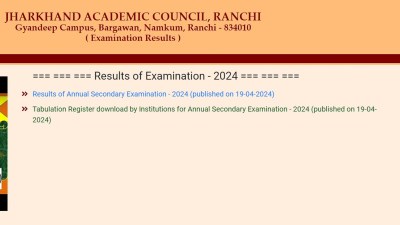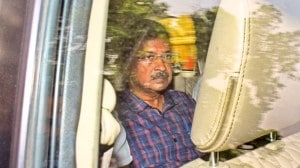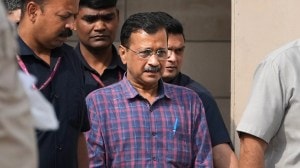- India
- International
Coronavirus India timeline: Tracking crucial moments of Covid-19 pandemic in the country
Coronavirus (Covid-19) India Timeline: Here we track some of the crucial moments of the coronavirus pandemic in India and where we stand presently in our fight against Covid-19.
 Participants are screened for the presence of antibodies in the blood during the serosurvey to check whether they were infected with coronavirus in the past.
Participants are screened for the presence of antibodies in the blood during the serosurvey to check whether they were infected with coronavirus in the past.Coronavirus India Timeline: Nearly eight months since the first Covid-19 case was reported in Kerala on January 30, the number of confirmed cases of novel coronavirus crossed the 63 lakh mark, making India the second worst coronavirus-hit nation, while it is at the third spot in terms of fatalities globally after the US and Brazil. India’s Covid-19 tally had crossed the 20-lakh mark on August 7, 30 lakh on August 23, 40 lakh on September 5, 50 lakh on September 16 and 60 lakh on September 27. The death toll presently stands at 98,678, with the fatality rate dropping to 1.57 per cent. The national recovery rate is above 83 per cent, with over 52 lakh having recuperated.
From the first Covid-19 case — a 20-year-old medical student who came back from Wuhan in China — to Prime Minister Narendra Modi announcing a ‘Janata curfew’ followed by one of the longest and stringent lockdowns, here we track some of the crucial moments of the coronavirus pandemic and where we stand presently in our fight against the virus.
Coronavirus (Covid-19) India Timeline
December 31, 2019: On December 31 last year, China alerted the WHO to several cases of unusual pneumonia in Wuhan, a city of 11 million people. Several of those infected worked at the city’s Huanan Seafood Wholesale Market, which was shut down on January 1.
January 7, 2020: WHO officials announced they had identified a new virus and named it 2019-nCoV. It was identified as belonging to the coronavirus family, which includes SARS and the common cold, and spreads via airborne droplets.
January 11, 2020: China announces its first death from the virus, a 61-year-old man who had purchased goods from the seafood market.
January 30, 2020: India’s first Covid-19 patient — a 20-year-old medical student who just came back from Wuhan in China — was reported in Kerala’s Thrissur district.

On the same day, WHO declares the coronavirus a global emergency of international concern as the death toll in China jumped to 170, with 7,711 cases reported in the country. At this point, more than 7500 cases were reported in 20 countries of the world.
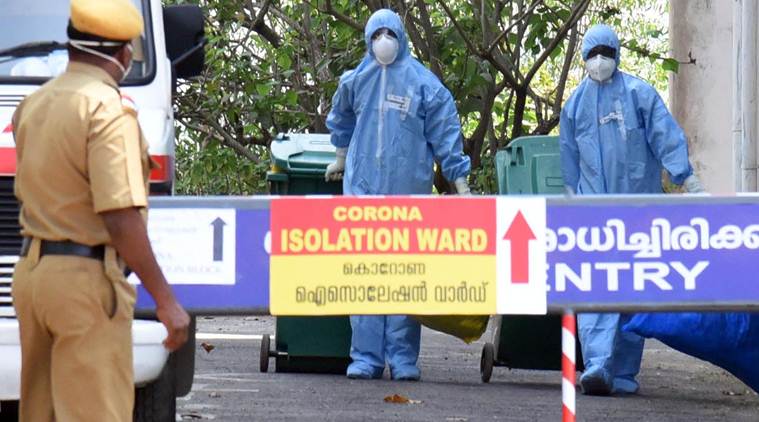 India’s first Covid-19 patient — a 20-year-old medical student who just came back from Wuhan in China — was reported in Kerala’s Thrissur district (Express photo)
India’s first Covid-19 patient — a 20-year-old medical student who just came back from Wuhan in China — was reported in Kerala’s Thrissur district (Express photo)
January 31: India airlifts citizens from China, one month after the new disease was first reported. The flight with 324 Indian passengers left Wuhan at 4 am on February 1.
February 1: The second evacuation flight approved by China. The plane landed at 8 pm, and took off with 323 Indians and seven Maldives nationals at 6 am on February 2.
 The first batch of Indian nationals was transported from Wuhan, China, in a flight arranged by Air India. (Source: ANI)
The first batch of Indian nationals was transported from Wuhan, China, in a flight arranged by Air India. (Source: ANI)
February 3: Kerala government declares coronavirus a state calamity after two more cases were reported in Alappuzha and Kasaragod district.
February 4: India cancels existing visas for Chinese and foreigners who had visited China in the last two weeks as the death toll in China exceeds that of the 2002-03 SARS outbreak. About 3,711 people, including 138 Indians, were quarantined aboard the Diamond Princess cruise ship docked in Japan after a passenger, who had disembarked at Hong Kong, was found to be infected with coronavirus.
February 11: WHO announces that the disease caused by new coronavirus will be called ‘Covid-19’. The new coronavirus was named SARS-CoV-2.
February 19: Test results of India’s first Covid-19 patient come negative and she is discharged from the Thrissur Medical College Hospital.
March 2: Two more cases outside Kerala reported – a 45-year-old man in Delhi who had travelled back from Italy and a 24-year-old engineer in Hyderabad who had a travel history from Dubai.
March 10: 50 Covid-19 cases reported in India, with infections doubling in just 4 days. Thirteen states and UTs in India have reported at least one Covid-19 case.
March 11: The World Health Organization declares Covid-19 a pandemic, which is defined “an epidemic that has spread over several countries or continents, and most people do not have immunity against it”. At this point, more than 1,21,000 people were infected and over 4,300 died globally. US blocks visitors from Europe.
March 12: India reports first fatality due to Covid-19 after a 76-year-old man from Kalburgi, Karnataka, dies. India also bans entry of foreigners and suspends all visas from March 13 to April 15.
March 15: Total number of Covid-19 cases touches 100 as Maharashtra overtakes Kerala with maximum infections. CDC recommends no gatherings of 50 or more people in the US.
March 22: Upon a call by Prime Minister Narendra Modi, a 14-hour voluntary lockdown called ‘Janata Curfew’ was observed in India. Prime Minister Boris Johnson imposes lockdown in Britain.
March 25: A nationwide lockdown was imposed till April 14, with only essential services kept out of its purview. India reported 606 cases and 10 deaths so far. Tokyo Olympics postponed for a year until 2021.
March 26: On the second day of the lockdown, India saw caravans of migrant labourers walking hundreds of kilometres along highways to reach their native villages.
Finance Minister Nirmala Sitharaman announces a Rs 1.7 lakh crore package under a new scheme called the Pradhan Mantri Gareeb Kalyan Yojana (PMGKBY) to address the economic distress. The package includes free food to the “poorest of the poor”, income support to farmers and unorganised sector workers.
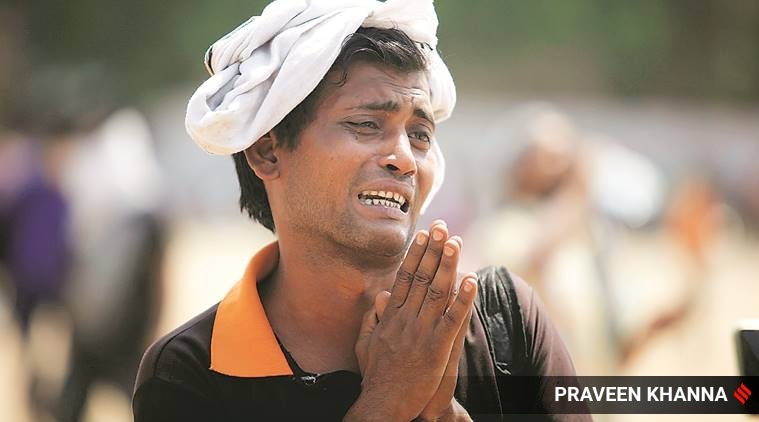 On the second day of the lockdown, India saw caravans of migrant labourers walking hundreds of kilometres along highways to reach their native villages
On the second day of the lockdown, India saw caravans of migrant labourers walking hundreds of kilometres along highways to reach their native villages
March 27: RBI announces a three-month moratorium (March 1 to May 31) on loan and card repayments and slashed its main policy rate — repo rate by 75 basis points and cash reserve ratio (CRR) of banks by 100 basis points to stabilise the financial markets and reduce the pain on borrowers hit by Covid-19 pandemic.
March 30: Nizamuddin Markaz, which is the international headquarters of Tabilghi Jamaat, emerges as Covid-19 hotspot, with authorities saying around 5,000 are being traced across the country.
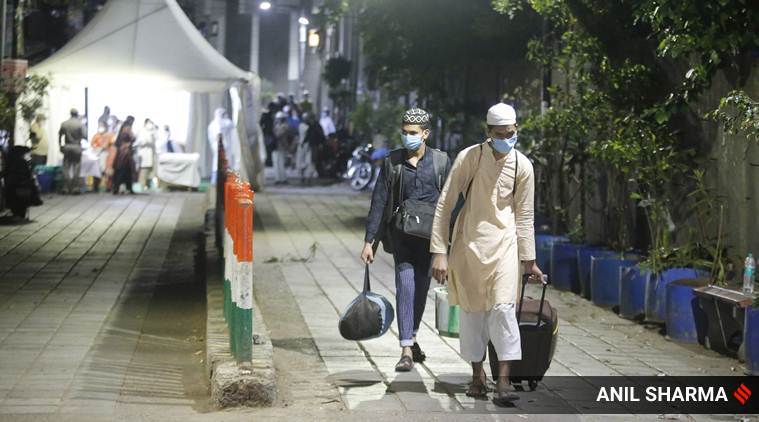 Nizamuddin Markaz, which is the international headquarters of Tabilghi Jamaat, emerged as Covid-19 hotspot in Delhi
Nizamuddin Markaz, which is the international headquarters of Tabilghi Jamaat, emerged as Covid-19 hotspot in Delhi
April 5: Upon PM Modi’s call, citizens light diyas, candles, torches and flashlights to show solidarity with Covid-19 frontline healthcare workers.
April 6: The death toll in India crosses 100-mark.
April 14: Prime Minister Modi extends the 21-day lockdown to May 3. 10,000 confirmed cases were recorded. Ministry of Home Affairs issues “National Directives” for COVID-19 management, makes wearing a face cover mandatory in work and public spaces.
April 29: India records 1,000 confirmed deaths.
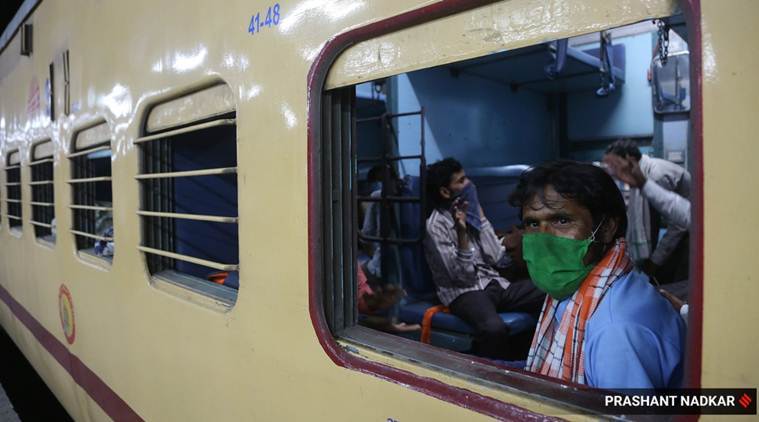 Shramik Special trains were started for stranded migrant workers from May 1
Shramik Special trains were started for stranded migrant workers from May 1
May 1: Home Ministry extends lockdown for two weeks starting May 4 with zone-wise restrictions. Divides districts into red, orange and green zones on the basis of cases. Shramik Special trains started for stranded migrant workers.
May 4: Liquor shops reopen across the country, with people making a beeline for outlets, throwing social distancing rules to the wind. Several liquor vends had to be shut only hours after they reopened as scores of people gathered outside, with police resorting to lathi charge to bring the situation under control in many areas across the country.
 Liquor shops reopen across the country, with people making a beeline for outlets, throwing social distancing rules to the wind
Liquor shops reopen across the country, with people making a beeline for outlets, throwing social distancing rules to the wind
May 7: Phase 1 of Vande Bharat mission to evacuate nearly 15,000 Indians stranded abroad begins. 50,000 confirmed cases reported in India.
May 12: PM Narendra Modi announces Rs 20 lakh crore Atmanirbhar package, says size is 10% of GDP, including announcements made by RBI earlier.
May 13: Finance Minister Nirmala Sitharaman announces Tranche 1 of Atmanirbhar package of Rs 5.94 lakh crore (2.97% of GDP). It includes collateral free automatic loans to MSMEs, 100% credit guarantee cover to banks, NBFCs worth Rs 3 lakh crore, subordinate debt to stressed MSMEs worth Rs 20,000 crore, equity infusion for MSMEs worth Rs 50,000 crore and EPF support for 3 months worth Rs 2,500 crore.
May 14: Finance Minister Nirmala Sitharaman announces Tranche 2 of Atmanirbhar package of Rs 3.10 lakh crore (1.55% of GDP). It includes free food grain supply to migrants for 2 months worth Rs 3,500 crore and special liquidity scheme to provide Rs 10,000 working capital to 50 lakh street vendors at Rs 5,000 crore.
 Finance Minister Nirmala Sitharaman announced contours of the Rs 20 lakh crore Atmanirbhar package over 5 days (PTI)
Finance Minister Nirmala Sitharaman announced contours of the Rs 20 lakh crore Atmanirbhar package over 5 days (PTI)
May 15: Finance Minister Nirmala Sitharaman announces Tranche 3 of Atmanirbhar package of Rs 1.5 lakh crore (0.75% of GDP). It includes financing facility for agri infra projects worth Rs 1,00,000 crore. Besides, govt decides to formulate a central law that will not bind farmers to sell crop only to licensed traders in the APMC mandis.
May 16: Finance Minister Nirmala Sitharaman announces Tranche 4 of Atmanirbhar package of Rs 8,100 crore (0.04% of GDP). Major policies include hiking of defence FDI to 74% from 49% and viability gap funding (VGP) for social infrastructure.
May 17: MHA extends lockdown till May 31, allows inter-state movement of passenger vehicles, buses with mutual consent of states. With nearly 86,000 cases, India overtakes China in terms of the total number of cases reported.
Finance Minister Nirmala Sitharaman announces Tranche 5 of Atmanirbhar package of Rs 40,000 crore (0.2% of GDP). Limit of state borrowings increased to 5% from 3% of GSDP, MGNREGA gets additional Rs 40,000 crore.
May 19: Total Covid-19 cases in India cross 1 lakh.
May 25: Domestic flight services resume in a calibrated manner, with only 30% of regular schedules.
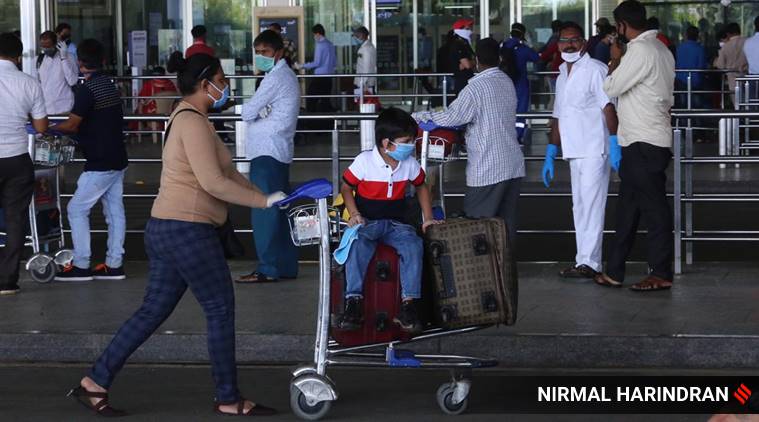 Domestic flight services resumed in a calibrated manner on May 25
Domestic flight services resumed in a calibrated manner on May 25
June 5: WHO changes its guidelines on using face masks, advising that face masks should be worn in public to stop the spread of Covid-19. So far, it maintained that there was not enough evidence to suggest that healthy individuals should wear masks and encouraged the use of medical face masks only by those who were sick or caring for the sick.
June 8: Phased reopening begins, with Unlock 1.0 guidelines coming into force, as India records more than 2,50,000 COVID-19 cases and 7200 deaths. Centre allows re-opening of malls, hotels, restaurants and places of worship.
June 12: India overtakes UK to become 4th worst coronavirus-hit country, with over 3 lakh cases.
June 13: Health Ministry includes loss of the sense of smell and taste among the symptoms of Covid-19.
June 27: Total cases cross 5 lakh. After reporting 100,000 cases on May 19, India adds 100,000 cases in 15, 10, 8 and 5 days respectively to bring the total number of cases to half a million.
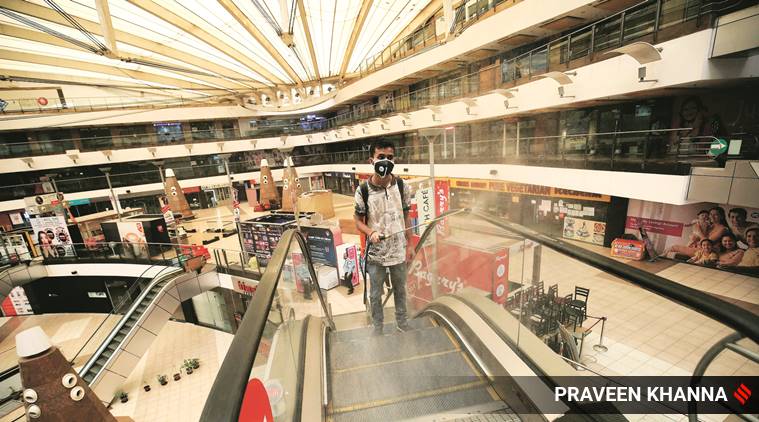 Centre allowed re-opening of malls, hotels, restaurants and places of worship from June 8
Centre allowed re-opening of malls, hotels, restaurants and places of worship from June 8
July 1: Unlock 2.0 guidelines come into force, with relaxations in night curfew, provision for more domestic flights and trains, and clearance for more than five people in a shop.
July 6: India overtakes Russia to become third worst coronavirus-hit country, with 6.97 lakh cases. The US had more than 28 lakh cases, while Brazil had close to 16 lakh.
July 8: The World Health Organization acknowledges “evidence emerging” of the airborne spread of the novel coronavirus besides transmission through respiratory droplets.
July 15: Phase-1 clinical trials of India’s first indigenous Covid-19 vaccine, Covaxin, developed by Hyderabad-based pharmaceutical company Bharat Biotech in collaboration with the National Institute of Virology and Indian Council of Medical Research, starts across the country. Zydus Cadila also starts human trials of its ZyCov-D vaccine.
 Covaxin has been derived from a strain of the novel coronavirus isolated by the National Institute of Virology in Pune
Covaxin has been derived from a strain of the novel coronavirus isolated by the National Institute of Virology in Pune
July 17: International commercial flights resume as India establishes individual bilateral bubbles with France and the US. India’s total Covid-19 cases cross 10 lakh. Death toll stands at 25,600.
July 25: BCCI announces Indian Premier League to start on September 19 in the United Arab Emirates (UAE) with the final slated on November 8.
August 1: Phase 3.0 of Unlock comes into force, with govt allowing gymnasiums and yoga centres to function, and revoking the night curfew order.
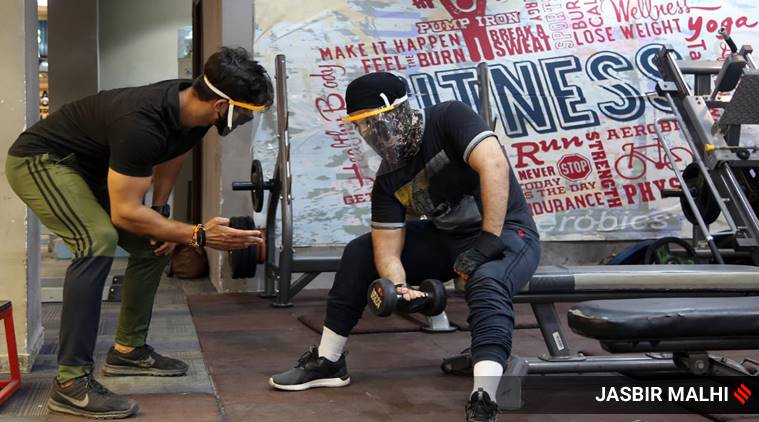 At a gym in Chandigarh. Govt allowed gymnasiums and yoga centres to function from August
At a gym in Chandigarh. Govt allowed gymnasiums and yoga centres to function from August
August 11: Russia becomes first country to grant regulatory approval to a Covid-19 vaccine, dubbed “Sputnik V”, for civilian use, claims President Vladimir Putin. Development raises doubts among global scientific community as approval comes before Phase III trials.
August 22: The Indian Council of Medical Research reports more than one million diagnostic tests for Covid-19, with India overtaking Russia in terms of total number of samples tested till now. With 34.5 million tests having conducted till now, India ranks third in the world. Only China (90.4 million) and the United States (74.7 million) tested more.
August 24: Researchers at the University of Hong Kong said a man who recovered from Covid-19 was infected again four-and-a-half months later in the first documented instance of human re-infection. India crosses three million cases.
August 26: Serum Institute of India starts India trials of Covishield, the University of Oxford-AstraZeneca vaccine candidate, with two volunteers in Pune’s Bharati Vidyapeeth Medical College receiving the first shots.
 Researchers from Serum Institute work on a bioreactor to manufacture a possible COVID-19 vaccine (NYT)
Researchers from Serum Institute work on a bioreactor to manufacture a possible COVID-19 vaccine (NYT)
August 29: Centre issues Unlock 4.0 guidelines, allows metro services to start from September 7, larger gatherings with 100 people allowed from September 21, while senior students can come to schools on a voluntary basis.
August 30: India reports a worldwide record for daily new cases, with 78,761 infections. The tally exceeds the one-day increase of 77,299 reported by the United States in mid-July. Covid-19 cases cross 25-million mark globally.
August 31: With economic activity suspended due to lockdown, India’s Gross Domestic Product (GDP) growth contracts 23.9 per cent in the April-June quarter, data released by the National Statistical Office (NSO) Monday showed.
September 6: First case of Covid-19 reinfection detected in Bengaluru. A 27-year-old woman who recovered from the infection contracts the virus again, in the span of a month.
 Metro services, suspended since late March, resumed operations with adequate precautions against Covid-19 in cities across the country.
Metro services, suspended since late March, resumed operations with adequate precautions against Covid-19 in cities across the country.
September 7: India overtakes Brazil to emerge as the country with the second largest number of people infected with novel coronavirus, recording 41.13 lakh confirmed infections.
Metro services resume in a graded manner across the country as per Union Home Ministry’s Unlock-4 guidelines. Commercial metro services had stopped on March 24.
September 10: Serum Institute of India halts clinical trials of the Covid-19 vaccine candidate developed by University of Oxford as AstraZeneca pauses global trials after one participant develops a “potentially unexplained illness”.
September 12: India breaks its own record in fresh Covid-19 cases, records another highest single-day spike in infections, with 97,570 people found coronavirus positive in 24 hours.
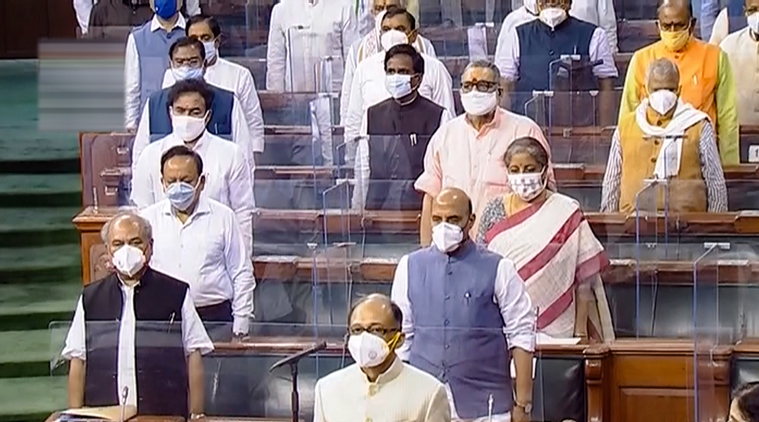 The Monsoon session of Parliament kicked off under the shadow of the Covid-19 pandemic on September 14 (PTI)
The Monsoon session of Parliament kicked off under the shadow of the Covid-19 pandemic on September 14 (PTI)
September 14: The 18-day monsoon session of Parliament kicks off under the shadow of the Covid-19 pandemic, with Lok Sabha and Rajya Sabha members occupying seats in both Houses to ensure social distancing. More than two dozen MPs belonging to various parties tested positive, sources confirmed.
September 16: The number of confirmed cases of novel coronavirus crossed the five million (50 lakh) mark on Tuesday, with the addition of more than 90,123 new detections. The last one million cases have been added in just 11 days. India closes gap with the US, which has 6.8 million cases (68.77 lakh) so far.
Hyderabad-headquartered drugmaker Dr Reddy’s Laboratories (DRL) enters into an agreement to help conduct Phase III human trials of Russia’s Sputnik V Covid-19 vaccine in India. Firm to distribute up to 100 million doses for “mass vaccination” in the country.
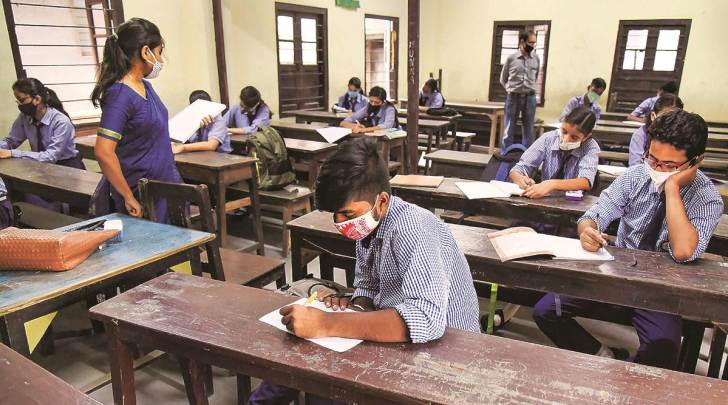 At a school in Guwahati, Monday. Schools across the country opened partially for students of senior classes. (PTI)
At a school in Guwahati, Monday. Schools across the country opened partially for students of senior classes. (PTI)
September 17: The number of active cases of novel coronavirus in the country crossed the one million (ten lakh) mark on Wednesday. These are the people who are yet to recover from the disease, and thus require medical attention, and are also the ones who can spread the infection.
September 19: The Drug Controller General of India (DGCI) approves country’s first Clustered Regularly Interspaced Short Palindromic (CRISPR) Covid-19 test for commercial launch. Jointly developed by Council of Scientific and Industrial Research (CSIR) and Tata Group, the test has been named ‘Feluda’.
September 21: After remaining shut for the past six months, schools partially reopened in several states to enable students studying in Classes 9 to 12 to visit their institutions on a voluntary basis for taking guidance from their teachers.
September 22: India reports over 1 lakh coronavirus recoveries in a single-day for the first time, improving the recovery rate to 80.86 per cent. Heath Ministry data shows 1,01,468 Covid-19 patients recuperated.
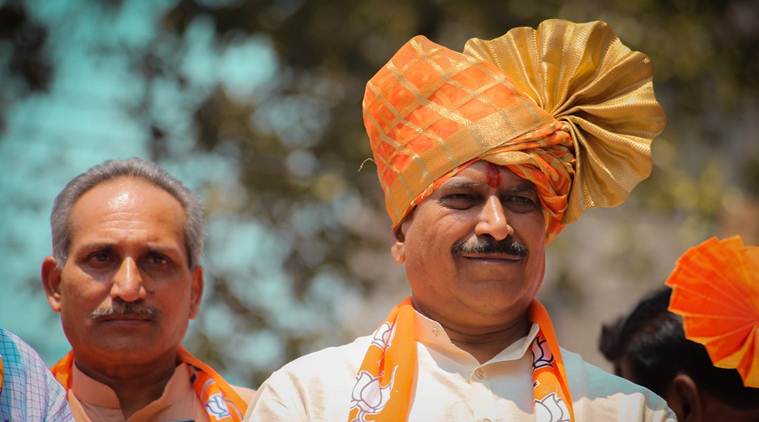 Suresh Angadi, Member of Parliament, from Belagavi (File)
Suresh Angadi, Member of Parliament, from Belagavi (File)
September 23: Minister of State for Railways Suresh Chanabasappa Angadi became the first Union minister to succumb to the coronavirus. Angadi, 65, passed away less than two weeks after he was admitted to the All India Institute of Medical Sciences (AIIMS) on September 11 with symptoms of Covid-19.
September 27: India’s Covid-19 tally goes past 60 lakh, with total recoveries crossing the 50 lakh milestone. The rise in the number of total recovered cases from 1 lakh in June 2020 has been steep and the last 10 lakh recoveries were added in just 11 days, the Health Ministry said.
September 28: The global death count from Covid-19 crosses one million, taking just three months to double from half a million. The total number of Covid-19 cases across the world has crossed 33 million, while nearly 23 million people have recovered.
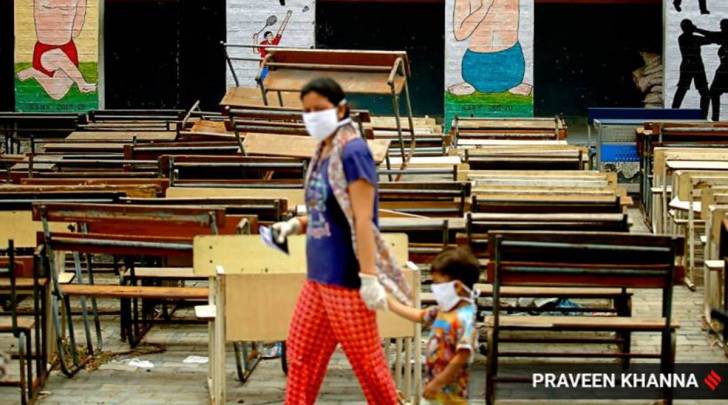 States and Union Territories can take a decision on whether to open schools from October 15
States and Union Territories can take a decision on whether to open schools from October 15
September 30: Ministry of Home Affairs issues Unlock 5.0 guidelines, allows cinemas and multiplexes to open with 50 per cent capacity from October 15; states and Union Territories can take a decision on whether to open schools; removes limits on outdoor gatherings while allowing indoors gatherings with 50 per cent capacity. Swimming pools “being used for sportspersons” are also permitted to open, as are entertainment parks.
Apr 19: Latest News
- 01
- 02
- 03
- 04
- 05











